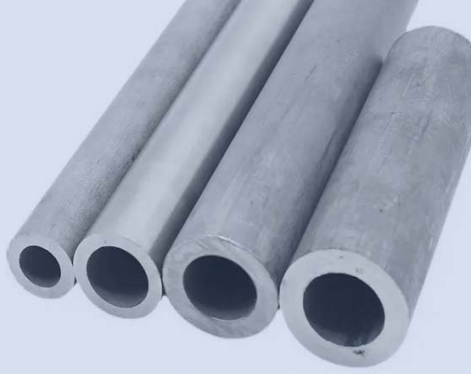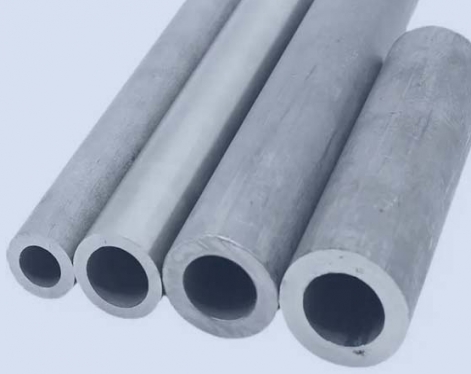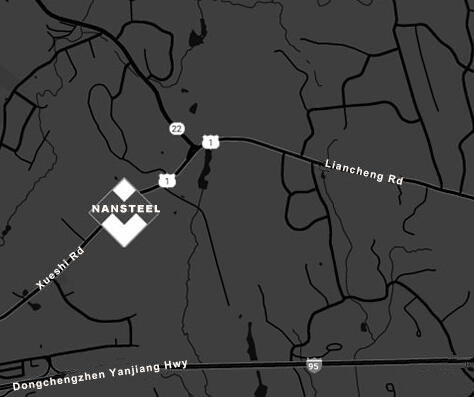When purchasing thick-walled seamless steel pipes, there are many quality indicators that need to be paid attention to. These indicators are directly related to the performance and safety of the steel pipes. The following aspects should be carefully summarized when purchasing thick-walled seamless steel pipes:
Size and shape
1. Outer diameter, wall thickness and length: Ensure that the actual size of the steel pipe is consistent with the size required by the order or standard. Use tools such as vernier calipers and tape measures to measure. The allowable deviation should comply with relevant standards.
2. Wall thickness uniformity: Uneven wall thickness will lead to a decrease in the pressure-bearing capacity of the steel pipe and even cause safety accidents. Use a micrometer to measure the wall thickness at different positions to ensure that its deviation is within the allowable range.
3. Ovalency: Ovalency refers to the degree of non-circularity of the cross-section of the steel pipe. Excessive ovality will affect the connection and use of the steel pipe.
4. Curvature: The curvature of the steel pipe will affect its installation and use. Check the straightness of the steel pipe to ensure that its curvature is within the allowable range.
5. End face verticality: The end face of the steel pipe should be perpendicular to the axis to ensure the reliability of the connection.

Appearance quality
Surface defects: Check whether there are cracks, scratches, folds, scars, inclusions, rust and other defects on the surface of the steel pipe, which will affect the strength and corrosion resistance of the steel pipe.
Surface finish: Select appropriate surface finish according to usage requirements.
Mechanical properties
Tensile strength: refers to the maximum stress that a steel pipe can withstand before breaking under tensile force.
Yield strength: refers to the stress at which the steel pipe begins to undergo plastic deformation under the action of tensile force.
Elongation: It refers to the ratio of the increase in gauge length to the original gauge length after the steel pipe breaks in a tensile test.
Impact toughness: refers to the ability of steel pipe to resist impact load.
Hardness: refers to the ability of the steel pipe surface to resist the penetration of hard objects.
The above mechanical performance indicators should comply with relevant standard requirements and provide corresponding test reports.
Chemical composition
Content of main chemical elements: The chemical composition of the steel pipe determines its basic performance. Check whether the chemical composition of the steel pipe meets the grade requirements specified in the standard.
Content of impurity elements: Impurity elements such as sulfur (S) and phosphorus (P) will have an adverse effect on the performance of steel pipes, and their content should be strictly controlled. A chemical composition analysis report is usually required.
Grain size: The size of the grain will affect the mechanical properties of the steel pipe.
Organization uniformity: Uneven organization will lead to unstable performance of steel pipe.
Metallographic examination is often used for steel pipes for special purposes.
Nondestructive Testing
Ultrasonic testing (UT): Used to detect whether there are defects such as cracks and inclusions inside the steel pipe.
Eddy current testing (ET): Used to detect defects on the surface and near the surface of steel pipes.
Magnetic Particle Testing (MT): Used to detect whether there are magnetic defects on the surface and near the surface of steel pipes.
Radiographic testing (RT): It is used to detect whether there are defects inside the steel pipe, but it is more expensive.
Standards and Certification
Implementation standards: Confirm the standards implemented by the steel pipe, such as GB/T 8162, ASTM A106, etc.
Quality certification: Understand whether the manufacturer has passed ISO 9001 and other quality management system certifications.
Other notes
Manufacturer: Choose a reputable and experienced manufacturer.( Nansteel Manufacturing Co., Ltd )
Delivery status: Confirm the delivery status of the steel pipe, such as hot rolling, normalizing, annealing, etc.
Packaging and transportation: Ensure that the steel pipe is properly protected during transportation to avoid damage.
Inspection report: Request relevant inspection reports, such as mechanical properties test report, chemical composition analysis report, non-destructive testing report, etc.
Read more: The Main Uses of Thick-walled Seamless Steel Pipes in Industry
Size and shape
1. Outer diameter, wall thickness and length: Ensure that the actual size of the steel pipe is consistent with the size required by the order or standard. Use tools such as vernier calipers and tape measures to measure. The allowable deviation should comply with relevant standards.
2. Wall thickness uniformity: Uneven wall thickness will lead to a decrease in the pressure-bearing capacity of the steel pipe and even cause safety accidents. Use a micrometer to measure the wall thickness at different positions to ensure that its deviation is within the allowable range.
3. Ovalency: Ovalency refers to the degree of non-circularity of the cross-section of the steel pipe. Excessive ovality will affect the connection and use of the steel pipe.
4. Curvature: The curvature of the steel pipe will affect its installation and use. Check the straightness of the steel pipe to ensure that its curvature is within the allowable range.
5. End face verticality: The end face of the steel pipe should be perpendicular to the axis to ensure the reliability of the connection.

Appearance quality
Surface defects: Check whether there are cracks, scratches, folds, scars, inclusions, rust and other defects on the surface of the steel pipe, which will affect the strength and corrosion resistance of the steel pipe.
Surface finish: Select appropriate surface finish according to usage requirements.
Mechanical properties
Tensile strength: refers to the maximum stress that a steel pipe can withstand before breaking under tensile force.
Yield strength: refers to the stress at which the steel pipe begins to undergo plastic deformation under the action of tensile force.
Elongation: It refers to the ratio of the increase in gauge length to the original gauge length after the steel pipe breaks in a tensile test.
Impact toughness: refers to the ability of steel pipe to resist impact load.
Hardness: refers to the ability of the steel pipe surface to resist the penetration of hard objects.
The above mechanical performance indicators should comply with relevant standard requirements and provide corresponding test reports.
Chemical composition
Content of main chemical elements: The chemical composition of the steel pipe determines its basic performance. Check whether the chemical composition of the steel pipe meets the grade requirements specified in the standard.
Content of impurity elements: Impurity elements such as sulfur (S) and phosphorus (P) will have an adverse effect on the performance of steel pipes, and their content should be strictly controlled. A chemical composition analysis report is usually required.
Metallographic structure
Grain size: The size of the grain will affect the mechanical properties of the steel pipe.
Organization uniformity: Uneven organization will lead to unstable performance of steel pipe.
Metallographic examination is often used for steel pipes for special purposes.
Nondestructive Testing
Ultrasonic testing (UT): Used to detect whether there are defects such as cracks and inclusions inside the steel pipe.
Eddy current testing (ET): Used to detect defects on the surface and near the surface of steel pipes.
Magnetic Particle Testing (MT): Used to detect whether there are magnetic defects on the surface and near the surface of steel pipes.
Radiographic testing (RT): It is used to detect whether there are defects inside the steel pipe, but it is more expensive.
Standards and Certification
Implementation standards: Confirm the standards implemented by the steel pipe, such as GB/T 8162, ASTM A106, etc.
Quality certification: Understand whether the manufacturer has passed ISO 9001 and other quality management system certifications.
Other notes
Manufacturer: Choose a reputable and experienced manufacturer.( Nansteel Manufacturing Co., Ltd )
Delivery status: Confirm the delivery status of the steel pipe, such as hot rolling, normalizing, annealing, etc.
Packaging and transportation: Ensure that the steel pipe is properly protected during transportation to avoid damage.
Inspection report: Request relevant inspection reports, such as mechanical properties test report, chemical composition analysis report, non-destructive testing report, etc.
Read more: The Main Uses of Thick-walled Seamless Steel Pipes in Industry









